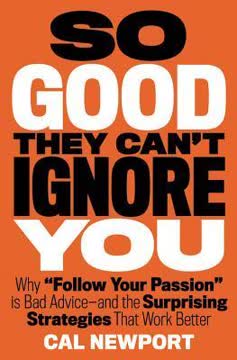Key Takeaways
1. Google's ranking algorithm prioritizes relevance, authority, and quality
"Google rewards websites that are experts in their fields and know what they're talking about."
Relevance is key. Google aims to serve the most relevant results to searchers. This means your website content must closely match user intent and use language that your target audience uses.
Authority matters. Google measures a site's authority through backlinks from other reputable websites. The more high-quality, relevant sites that link to you, the more authoritative Google considers you.
Quality is non-negotiable. Google's algorithms are designed to identify and reward high-quality content. This includes factors like:
- Depth and comprehensiveness of information
- Originality and uniqueness of content
- User experience and engagement metrics
- Mobile-friendliness and site speed
2. Optimize your website structure and content for maximum SEO impact
"Remember that Google's algorithms are designed to mimic human behaviour and preferences — and they are getting better and better at this by the day."
Structure for clarity. Organize your website with a clear hierarchy:
- Use descriptive URLs (e.g., /services/web-design instead of /page1)
- Implement logical internal linking
- Create a sitemap for both users and search engines
Content optimization. Focus on creating valuable, keyword-rich content:
- Use target keywords naturally in titles, headings, and body text
- Write compelling meta descriptions to improve click-through rates
- Include relevant images with optimized alt text
User experience. Prioritize a seamless user experience:
- Ensure fast loading times across all devices
- Make navigation intuitive and easy to use
- Optimize for mobile devices
3. Create a comprehensive content strategy to dominate your niche
"Remember that Google wants to reward websites that are experts in their fields and know what they're talking about."
Identify content gaps. Analyze your competitors and industry to find topics that aren't well-covered. This presents opportunities to establish your expertise.
Develop a content calendar. Plan regular, consistent content creation:
- Blog posts addressing common questions in your industry
- In-depth guides and tutorials
- Case studies showcasing your successes
- Infographics and visual content to explain complex topics
Diversify content formats. Cater to different learning styles and preferences:
- Written articles and blog posts
- Videos and webinars
- Podcasts and audio content
- Interactive tools and calculators
4. Build high-quality backlinks through strategic outreach and partnerships
"Getting links today takes mammoth amounts of time and energy, because it requires real people to do real work."
Focus on quality over quantity. A few high-quality backlinks from authoritative sites in your industry are far more valuable than numerous low-quality links.
Develop a targeted outreach strategy:
- Identify relevant websites and influencers in your niche
- Create valuable, link-worthy content (e.g., original research, infographics)
- Craft personalized pitches highlighting mutual benefits of collaboration
Explore various link-building tactics:
- Guest posting on reputable industry blogs
- Creating shareable, data-driven content
- Participating in industry events and conferences
- Leveraging relationships with suppliers, partners, and clients
5. Leverage social media and online directories to boost your online presence
"The most effective adverts focus on the customer and the benefits of your product or service, and a press release or article should be no different."
Optimize social profiles. Ensure your business information is complete and consistent across all platforms:
- Use relevant keywords in your bio and descriptions
- Include links to your website and key landing pages
- Regularly share valuable content to engage your audience
Utilize online directories. List your business in relevant directories:
- Google My Business (crucial for local SEO)
- Industry-specific directories
- Local business associations and chambers of commerce
Engage authentically. Build relationships and trust with your audience:
- Respond to comments and messages promptly
- Share user-generated content and testimonials
- Participate in relevant online communities and discussions
6. Conduct thorough keyword research to target the right audience
"Always remember that just because a competitor might be employing an SEO company, this doesn't mean you can't still beat them."
Understand search intent. Identify keywords that align with different stages of the customer journey:
- Informational queries (e.g., "how to", "what is")
- Navigational queries (branded searches)
- Commercial queries (product comparisons, reviews)
- Transactional queries (purchase-ready keywords)
Use keyword research tools. Leverage tools like Google Keyword Planner, SEMrush, or Ahrefs to:
- Discover new keyword opportunities
- Analyze search volume and competition
- Identify long-tail keywords with less competition
Prioritize keywords strategically. Focus on:
- Relevance to your business and offerings
- Reasonable search volume and competition levels
- Keywords with high commercial intent
7. Utilize data-driven PR and influencer marketing to gain authority
"The stories with the highest chance of publication are those that provide a new insight, recommendations or advice for readers or viewers, a timely survey, or perhaps analysis on a trending topic."
Create newsworthy content. Develop stories that appeal to journalists and publications:
- Conduct original research or surveys
- Analyze industry trends and provide expert commentary
- Share unique case studies or success stories
Build relationships with influencers. Collaborate with industry thought leaders:
- Offer valuable content or products for review
- Co-create content or host joint webinars
- Sponsor relevant podcasts or YouTube channels
Monitor and respond to opportunities. Use tools like HARO (Help a Reporter Out) to:
- Find journalists seeking expert quotes
- Offer timely and relevant insights
- Build credibility through media mentions
8. Implement technical SEO best practices for improved performance
"Website speed is not often talked about because it's a little bit technical and there's usually not much the business owner can do themselves, other than demand from their tech team that they speed the website up."
Optimize site speed. Faster loading times improve user experience and SEO:
- Compress images and use modern formats (e.g., WebP)
- Minimize HTTP requests and leverage browser caching
- Use a content delivery network (CDN) for faster global access
Implement schema markup. Help search engines understand your content:
- Add structured data for products, reviews, events, etc.
- Use schema.org vocabulary for consistent implementation
- Test your markup using Google's Structured Data Testing Tool
Ensure mobile-friendliness. With mobile-first indexing, prioritize mobile optimization:
- Use responsive design to adapt to different screen sizes
- Optimize tap targets and font sizes for mobile users
- Avoid using interstitials or pop-ups that disrupt mobile experience
9. Monitor and adapt your SEO strategy using analytics tools
"Remember for the time being that, like head lice spreading through a primary school, passing PageRank to another website through a link doesn't mean that your site loses PageRank by linking to it. PageRank is not a zero sum game and there's plenty to go around."
Track key metrics. Use tools like Google Analytics and Google Search Console to monitor:
- Organic traffic and search rankings
- Click-through rates and bounce rates
- Conversion rates and goal completions
Analyze user behavior. Understand how visitors interact with your site:
- Identify popular pages and content
- Spot high-exit pages that may need improvement
- Analyze user flow to optimize conversion paths
Stay updated on algorithm changes. Follow reputable SEO news sources:
- Official Google announcements and blogs
- Industry publications and thought leaders
- SEO forums and communities
Regularly review and adjust your strategy based on data insights and industry trends to maintain and improve your search engine rankings.
Last updated:
FAQ
What's "How To Get To The Top of Google" about?
- SEO Guide: The book is a comprehensive guide to search engine optimization (SEO) written in plain English, aimed at helping businesses improve their Google rankings.
- Practical Strategies: It provides practical strategies and real-world examples of how businesses have successfully increased their visibility and sales through SEO.
- Step-by-Step Approach: The book is structured to take readers from foundational concepts to advanced SEO techniques, making it suitable for both beginners and experienced marketers.
- Author's Expertise: Written by Tim Cameron-Kitchen, an SEO expert and head of Exposure Ninja, the book draws on his extensive experience in the field.
Why should I read "How To Get To The Top of Google"?
- Proven Success: The book shares strategies that have transformed businesses, such as increasing sales from $2,000 to $996,332 per month.
- Comprehensive Coverage: It covers everything from keyword research to content marketing and link building, providing a holistic view of SEO.
- Actionable Insights: Readers can implement the techniques immediately to start seeing improvements in their website's ranking and traffic.
- Avoid Common Mistakes: The book helps readers avoid costly SEO mistakes that could hinder their website's performance.
What are the key takeaways of "How To Get To The Top of Google"?
- Content and Links: The importance of high-quality content and authoritative backlinks in improving Google rankings.
- Keyword Strategy: How to find and target the most profitable keywords in your market.
- Website Optimization: Techniques for optimizing your website's structure, speed, and usability to enhance SEO.
- Digital PR and Outreach: Strategies for getting featured on major websites and leveraging influencer marketing.
How does Tim Cameron-Kitchen suggest finding profitable keywords?
- Brainstorming: Start by listing core products or services and considering what potential customers might search for.
- SEMrush Tool: Use tools like SEMrush to identify keywords your site is already ranking for and discover new opportunities.
- Competitor Analysis: Analyze competitors' keywords to find gaps and opportunities in your own strategy.
- Local Keywords: For location-based businesses, incorporate local areas and cities into your keyword strategy.
What is the role of backlinks according to "How To Get To The Top of Google"?
- Authority and Popularity: Backlinks are crucial for establishing a website's authority and popularity in Google's eyes.
- Quality Over Quantity: Focus on acquiring high-quality links from reputable and relevant websites rather than a large number of low-quality links.
- Link Metrics: Use metrics like Domain Authority to assess the potential impact of a backlink.
- Content Marketing: Engage in content marketing and digital PR to naturally earn backlinks from authoritative sources.
How does the book recommend structuring a website for SEO?
- Clear Hierarchy: Use a clear and logical structure with top-level pages and subpages to help both users and search engines navigate the site.
- Keyword-Rich URLs: Incorporate keywords into URLs to signal relevance to search engines.
- Separate Pages for Services: Create individual pages for each product or service to target specific keywords effectively.
- Sitemaps: Use XML sitemaps to ensure search engines can easily index all pages of the website.
What are the best quotes from "How To Get To The Top of Google" and what do they mean?
- "Change begins at home": This quote emphasizes the importance of starting SEO efforts with on-site optimization before seeking external links.
- "Does this website genuinely deserve to rank position one for this phrase?": A reminder to focus on quality and relevance in content and user experience.
- "SEO is really that simple": Highlights the fundamental simplicity of SEO principles, despite the complexity of execution.
- "Celebrate these, because lazy competitors won't bother with them": Encourages readers to embrace challenging tasks that competitors might avoid, as they can lead to significant advantages.
How does "How To Get To The Top of Google" suggest using content marketing?
- Knowledge Bases and FAQs: Create detailed content sections to demonstrate expertise and attract organic traffic.
- Blogging for Profit: Use blogs to answer audience questions and provide valuable information, driving traffic and conversions.
- Digital PR: Engage in digital PR to get featured on major websites, increasing visibility and earning backlinks.
- Data Outreach: Conduct surveys and studies to generate newsworthy content that can attract media attention and links.
What is the significance of Google Search Console in the book?
- Performance Tracking: Use Google Search Console to monitor how often your site appears in searches and how many clicks it receives.
- Sitemap Submission: Submit your sitemap to ensure Google indexes all pages of your website.
- Manual Actions: Check for any manual penalties that could affect your site's ranking and take corrective action if needed.
- Link Analysis: Identify which websites are linking to you and assess the quality of these links.
How does the book address the use of social media for SEO?
- Profile Optimization: Ensure social media profiles are complete and optimized with relevant keywords and links to your website.
- Engagement and Activity: Maintain active engagement on social platforms to build authority and potentially influence search rankings.
- Google My Business: Utilize Google My Business to enhance local SEO and appear in local search results.
- Review Management: Encourage customer reviews on platforms like Google and Facebook to boost credibility and visibility.
What are the common SEO mistakes highlighted in "How To Get To The Top of Google"?
- Ignoring On-Site Optimization: Failing to optimize website structure, speed, and content can hinder SEO efforts.
- Overlooking Keyword Research: Targeting the wrong keywords can lead to wasted efforts and poor results.
- Neglecting Quality Content: Low-quality or duplicate content can harm rankings and user experience.
- Relying on Low-Quality Links: Acquiring links from spammy or irrelevant sites can negatively impact your site's authority.
How does "How To Get To The Top of Google" suggest measuring SEO success?
- Leads and Sales: The ultimate measure of success is the increase in leads and sales generated from organic traffic.
- Keyword Rankings: Track the ranking of target keywords to assess visibility improvements.
- Organic Traffic Volume: Monitor changes in organic traffic to gauge the effectiveness of SEO efforts.
- Conversion Rates: Analyze conversion rates from organic traffic to ensure that increased visibility translates into business growth.
Review Summary
How To Get To The Top of Google receives mostly positive reviews, with readers praising its comprehensive, actionable SEO advice. Many find it easy to understand, even for beginners. The book covers technical SEO, content strategies, and off-site marketing. Readers appreciate the step-by-step approach and practical tips. Some note frequent mentions of the author's company and free website review offer. Overall, reviewers recommend it as a valuable resource for improving website rankings, though a few mention minor editing issues or repetitive self-promotion.
Similar Books










Download PDF
Download EPUB
.epub digital book format is ideal for reading ebooks on phones, tablets, and e-readers.




